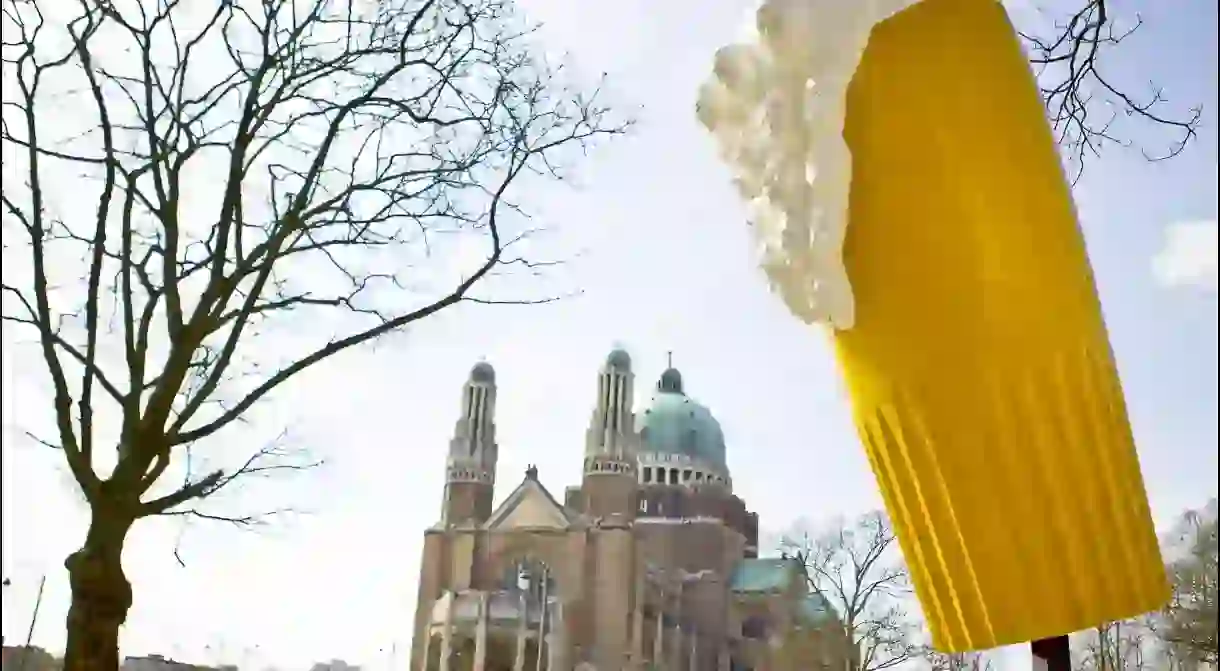Essential Things You Need To Know About Belgian Beer

For Belgians, creating beers that are rich in flavor and variety is a tradition that goes back centuries. The brewing and tasting has become an ingrained part of the tiny nation’s culture, one that international visitors are often over the moon about. Here we take a closer look at what makes Belgian beers stand out.
Worshipping the Holy Trappist
One of the most adored groups of Belgian beers is the Trappist. Of the eleven brewers around the world that are allowed to adorn their bottles with this precious label, six are produced in Belgium. The creators of these special brewskis are Trappist monks living and working in monasteries. What originally started in the 19th century as a product to sell to sustain in their livelihoods or reward the construction workers building their abbey, has slowly but surely become a source of national pride. The monks’ limited production capacity, attention to craftsmanship and life dedicated to prayer only add to the exclusivity. The Saint-Sixtus Abbey monks, whose famed Westvleteren XII has been hailed as the world’s best on multiple occasions, now require a reservation and waiting period before you’re allowed to drive up and take home a crate or two of their bad boys.

Double, tripel, quadrupel…
If you’re having trouble figuring out what ‘double’, ‘tripel’ and ‘quadrupel’ mean in regards to Belgian beer, you’re not the only one. This is a spot where a lot of Belgians run into trouble by mistakenly assuming that a tripel must have double the amount of alcohol in it than a double does, and so on. This is clearly not the case as a double has an alcohol percentage of about seven while the tripel is usually a stronger ale that climbs up to nine percent. It is widely known that the tripel is almost always a more spirituous drink than the double though, and a quadrupel is usually a whopper, you can’t drink more than a handful of unless you want to end up in a gutter somewhere. While the names are mainly used to indicate alcohol strength today, there are also theories that they originally derive from the amount of raw materials needed to make a certain kind of beer. It’s a question that will always remain somewhat of a mystery since there’s no consensus in the Belgian brewing community either.

The elusive single
The many doubles, tripels and occasional quadrupels on bar menus do beg the question: is there a single (enkel in Dutch) out there? The answer is yes, but the softy of the bunch only has an alcohol level of about five percent and is a rare find outside of monastery walls. Also called patersbier or petit bière, it’s the drink the monks are allowed to consume with their meals. Since they have to keep their wits about them while working (or brewing your beers for that matter) they stick to the lightest version possible. ‘Pater’ beers aren’t usually sold publicly, though some abbeys, like Westmalle, do serve it in their visitor café.
So many beers, so little time
Before you add the goal of tasting all Belgian beers to your bucket list, you’d be well-advised to know that the tiny country produces over 1,500 of them. The great diversity in tastes is one of the main reasons beer lovers have a tendency to fall madly in love with the Belgian originals. Often thought superior to wine in this way, beer offers a stunning array of flavor possibilities that the Belgians take full advantage of. Whether you like your pint sweet, fruity, bitter or spicy, there are tens to hundreds of options for you to choose from.

Wacko glasses
With a great variety of beers comes a great number of strange glasses to bring out their special flavors even more. While a Duvel should only be served in a tulip-shaped class (Belgians that are serious about their beer consider it sacrilege to drink it any other way), heavy ales such as Orval will be served in chalice-shaped glasses. One of the most delightful and distinctive of all has to be the glass belonging to Kwak beer. Way back in Napoleon’s day, a well-known brewer from the Dendermonde area called Pauwel Kwak owned a coaching inn. Sympathizing with coach drivers who couldn’t join their passengers for a drink (Napoleonic Code forbade this) he designed a special glass that could be fixed to the carriage so the driver could enjoy his beer while riding.

King of the heavy hitters
We’ve mentioned that the Belgian quadrupels pack a heavy punch, and some of them even climb up to 11 or 12 percent. While the famous Duvel is one of the strong beers you’ll run into the most, it’s almost a lightweight compared to the Wallonian Bush Beer (more of a barley wine) or the ominously named Struise Black Damnation VI – messy, an experiment by the Belgian brewery De Struise Brouwers that clocked in, at 39%, as the strongest beer in the world.

Festival excuse
Any excuse for a party! While Germany has its Oktoberfest to enjoy every fall, Belgians proudly host regular beer festivals throughout the year. From Beer Weekends in Leuven and Brussels to Antwerp’s Bollekesfeest and Poperinge’s Hop Parade, these are boisterous occasions where the national drink flows and the traditional medieval garb can be mightily entertaining.













